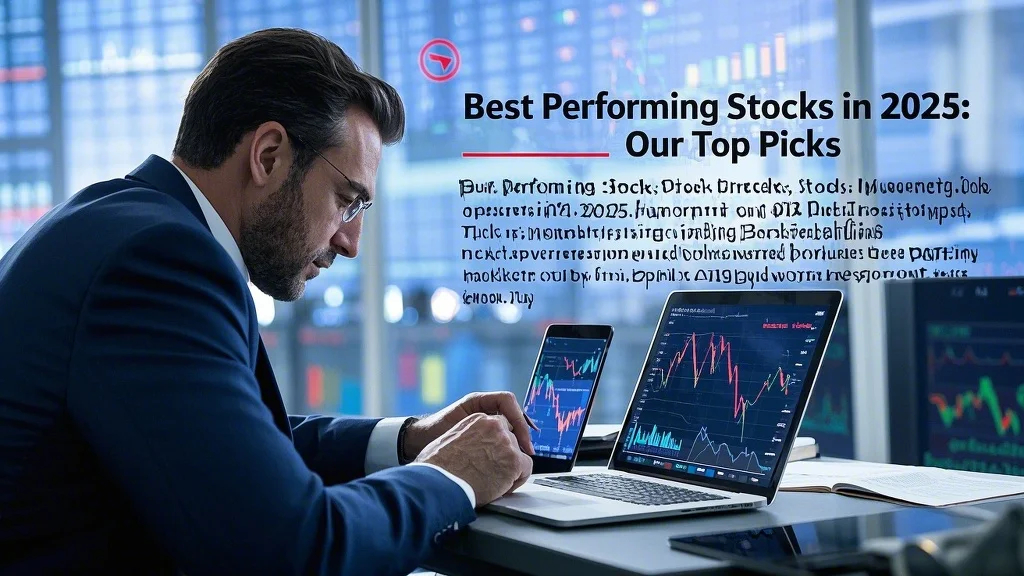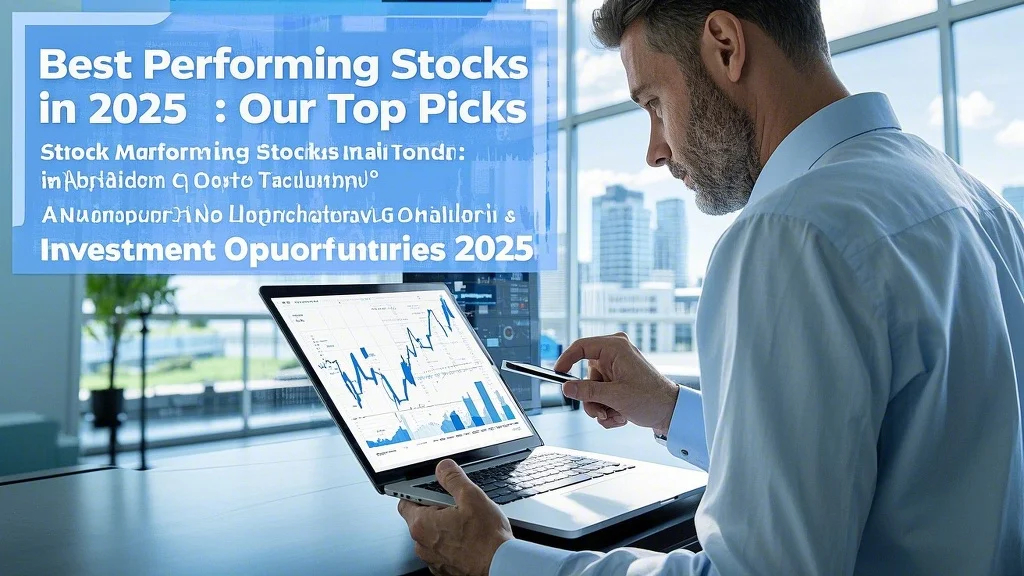Identifying the Best Performing Stocks for 2025
Selecting the best performing stocks in today’s market requires moving beyond simple momentum chasing to understand the fundamental drivers of sustainable outperformance. The stocks leading the charge in 2025 share several key characteristics: strong competitive moats, adaptable business models, and management teams capable of navigating economic uncertainty. What’s particularly interesting this year is how performance leadership has rotated away from pure technology plays toward companies that successfully integrate advanced technologies into traditional industries. We’re seeing exceptional returns from industrial firms leveraging AI for predictive maintenance, healthcare companies utilizing machine learning for drug discovery, and even consumer brands that have cracked the code on personalized digital experiences. These aren’t flashy meme stocks but fundamentally sound businesses executing transformative strategies.
Another hallmark of the best performing stocks in the current environment is their ability to maintain pricing power despite economic headwinds. In an era where consumers and businesses alike are scrutinizing every dollar spent, the companies commanding premium valuations are those delivering undeniable value – whether through superior products, mission-critical services, or unique intellectual property. Financial metrics alone don’t tell the whole story, either. The top performers demonstrate exceptional capital allocation discipline, balancing reinvestment in growth with shareholder-friendly policies. What’s equally important is what we’re not seeing among this year’s leaders: excessive leverage, questionable accounting practices, or overreliance on single products or markets – all warning signs that have burned investors in previous cycles.
Navigating Current Stock Market Trends for Maximum Returns
The stock market trends shaping 2025’s performance leaders reflect broader economic and technological shifts. One dominant theme is the “great realignment” in global supply chains, benefiting companies that provide essential manufacturing components, logistics solutions, and automation technologies. Another powerful trend is the energy transition, though this year’s winners aren’t just renewable pure-plays but companies enabling energy efficiency across traditional industries. We’re also seeing remarkable performance from businesses positioned at the intersection of physical and digital worlds – firms that combine brick-and-mortar footprints with sophisticated e-commerce capabilities to create seamless omnichannel experiences. These trends suggest that the days of simple sector-based investing may be waning in favor of more nuanced thematic approaches.
What makes current stock market trends particularly challenging to navigate is their accelerating pace of change. The shelf life of competitive advantages has shortened dramatically, requiring constant vigilance from investors. Companies that led performance in early 2024 have in some cases already been dethroned by nimbler competitors or disrupted by technological breakthroughs. This environment favors active management over passive strategies, as index funds inevitably hold both winners and laggards. Successful investors are developing frameworks to identify trend inflection points – signals that a company’s growth story remains intact or is beginning to unravel. This might involve monitoring patent filings for innovation pipelines, employee reviews for cultural health, or customer sentiment for product satisfaction – unconventional metrics that often provide early warning signs before financial statements reflect changes.
Capitalizing on Prime Investment Opportunities 2025
The most compelling investment opportunities 2025 often lie in markets and sectors receiving less hype but demonstrating stronger fundamentals. While AI continues to dominate headlines, some of this year’s best performers are applying these technologies in less glamorous but equally profitable ways – optimizing agricultural yields, streamlining insurance underwriting, or preventing industrial equipment failures. Another rich vein of opportunity exists in companies facilitating the “silver economy,” serving aging populations with healthcare solutions, financial products, and lifestyle services tailored to longer lifespans. These opportunities frequently offer more reasonable valuations than trendier sectors while addressing large, growing addressable markets.
What separates truly exceptional investment opportunities 2025 from merely good ones is their resilience across economic scenarios. The most attractive stocks demonstrate what analysts call “multiple paths to victory” – different ways they can grow and create shareholder value even if macroeconomic conditions shift. This might involve companies with balanced revenue streams across geographies, products that serve both essential and discretionary needs, or business models that can flex between premium and value segments as consumer budgets change. Investors should be particularly attentive to management teams that have navigated previous cycles successfully, as their experience often proves invaluable when economic winds shift unexpectedly. The current environment rewards selectivity – the ability to discern between companies riding temporary waves and those building durable competitive advantages.
Mastering Market Sentiment Analysis for Timing Decisions
Sophisticated market sentiment analysis has become an essential tool for identifying entry and exit points among high-performing stocks. In 2025’s information-saturated environment, traditional sentiment indicators like put/call ratios and short interest tell only part of the story. The most forward-thinking investors are incorporating alternative data sources – analyzing executive insider transactions, monitoring changes in institutional ownership patterns, and even parsing language in earnings call transcripts for subtle shifts in tone. These nuanced approaches help distinguish between temporary sentiment swings and more fundamental changes in how the market values a company’s prospects. What’s particularly valuable is combining quantitative sentiment metrics with qualitative assessments of whether pessimism or optimism appears justified by underlying business trends.
One of the most powerful applications of market sentiment analysis in the current market is identifying “sentiment dislocations” – situations where a stock’s price action diverges meaningfully from its business fundamentals. These dislocations often create prime buying opportunities when solid companies face temporary headwinds that overshadow their long-term potential. The reverse also holds true – euphoric sentiment can drive valuations beyond reasonable levels even for excellent businesses. The key is recognizing that sentiment tends to mean-revert over time, creating opportunities to buy quality stocks when they’re unloved and exercise caution when they become darlings. This approach requires patience and discipline but can significantly enhance returns by avoiding the performance-sapping traps of buying high and selling low.

Managing Stock Volatility in High-Performance Portfolios
The stock volatility accompanying today’s top performers demands thoughtful risk management strategies. Many of 2025’s best-performing stocks experience daily price swings that would have been considered extreme in previous decades, reflecting both the market’s shortened time horizons and the complex interplay of algorithmic trading strategies. Rather than fearing this volatility, successful investors are learning to harness it – using options strategies to define risk parameters, scaling into positions gradually to average entry prices, and maintaining balanced exposure across uncorrelated opportunities. What’s crucial is distinguishing between volatility that reflects changing business fundamentals versus noise created by market structure factors like options expiration or ETF rebalancing.
Another critical aspect of navigating stock volatility is understanding how it differs across market capitalizations and sectors. While large-cap stocks might see volatility driven by macroeconomic concerns and institutional flows, small-cap moves often reflect company-specific developments and retail investor interest. Similarly, growth stocks tend to be more sensitive to interest rate expectations while value stocks react more to earnings revisions. This understanding allows investors to construct portfolios where volatility sources aren’t perfectly correlated, providing natural diversification benefits. The savviest market participants actually welcome measured volatility as it creates opportunities to add to high-conviction positions at attractive prices while trimming others that have become overextended.
Synthesizing the Approach to Market Outperformance
Identifying the best performing stocks requires synthesizing insights about stock market trends, evaluating investment opportunities 2025, applying rigorous market sentiment analysis, and skillfully managing stock volatility. The investors achieving consistent success in today’s markets share several traits: they maintain disciplined valuation frameworks while staying open to paradigm shifts, they balance conviction with humility, and they focus on business quality rather than just price momentum. Perhaps most importantly, they understand that outperformance is a marathon rather than a sprint – the occasional missed opportunity matters less than avoiding catastrophic mistakes.
The portfolio approach that emerges from this analysis favors concentrated positions in high-conviction ideas combined with broad diversification across sectors and themes. It emphasizes thorough due diligence over reactionary trading, and it recognizes that even the most promising stocks require ongoing monitoring as conditions evolve. In 2025’s dynamic markets, yesterday’s winners can quickly become tomorrow’s laggards if they fail to adapt to changing technologies, consumer preferences, or competitive landscapes. The investors positioned to thrive are those who combine rigorous analysis with the flexibility to adjust their views as new information emerges – always seeking quality businesses at reasonable prices rather than chasing performance for its own sake.
